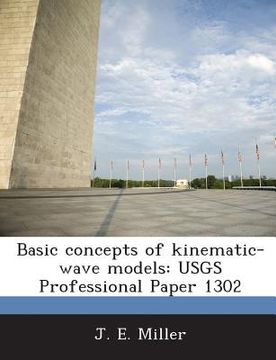Compartir
Basic Concepts of Kinematic-Wave Models: Usgs Professional Paper 1302 (en Inglés)
J. E. Miller
(Autor)
·
Bibliogov
· Tapa Blanda
Basic Concepts of Kinematic-Wave Models: Usgs Professional Paper 1302 (en Inglés) - Miller, J. E.
$ 22.120
$ 44.240
Ahorras: $ 22.120
Elige la lista en la que quieres agregar tu producto o crea una nueva lista
✓ Producto agregado correctamente a la lista de deseos.
Ir a Mis Listas
Origen: Estados Unidos
(Costos de importación incluídos en el precio)
Se enviará desde nuestra bodega entre el
Viernes 12 de Julio y el
Viernes 19 de Julio.
Lo recibirás en cualquier lugar de Chile entre 1 y 3 días hábiles luego del envío.
Reseña del libro "Basic Concepts of Kinematic-Wave Models: Usgs Professional Paper 1302 (en Inglés)"
The kinematic-wave model is one of a number of approximations of the dynamic-wave model. The dynamic-wave model describes one-dimensional shallow-water waves (unsteady, gradually varied, open-channel flow). The report provides a basic reference on the theory and application of kinematic-wave models and describes the limitations of the model in relation to the other approximations of the dynamic-wave model. In the kinematic-wave approximation, a number of the terms in the equation of motion are assumed to be insignificant. The equation of motion is replaced by an equation describing uniform flow. Thus, the kinematic-wave model is described by the continuity equation and a uniform flow equation such as the well-known Chezy or Manning formulas. Kinematic-wave models are applicable to overland flow where lateral inflow is continuously added and is a large part of the total flow. For channel-routing applications, the kinematic-wave model always predicts a steeper wave with less dispersion and attenuation than actually occurs. The effect of the accumulation of errors in the kinematic-wave model shows that the approximations made in the development of the kinematic-wave equations are not generally justified for most channel-routing applications. Modified flow-routing models can be used which help to stop the accumulation of error that occurs when the kinematic-wave model is applied.
- 0% (0)
- 0% (0)
- 0% (0)
- 0% (0)
- 0% (0)
Todos los libros de nuestro catálogo son Originales.
El libro está escrito en Inglés.
La encuadernación de esta edición es Tapa Blanda.
✓ Producto agregado correctamente al carro, Ir a Pagar.

